Ameraucana chickens are a relatively new breed, having recently been developed in the 1970s. But despite their short history, they have quickly become a favorite among backyard chicken keepers thanks to their beautiful blue eggs and friendly dispositions.
If you’re considering adding Ameraucanas to your flock, read about this versatile breed.
History of Ameraucana Chickens
Ameraucanas were developed in the U.S. in the 1970s by crossing Araucana chickens with other American breeds like the Rhode Island Red and the New Hampshire.
The Ameraucana is a domesticated chicken from the United States. The Araucana chicken was first developed in the United States in the 1970s. The breed is native to Chile and was brought to the US to be bred and raised here.
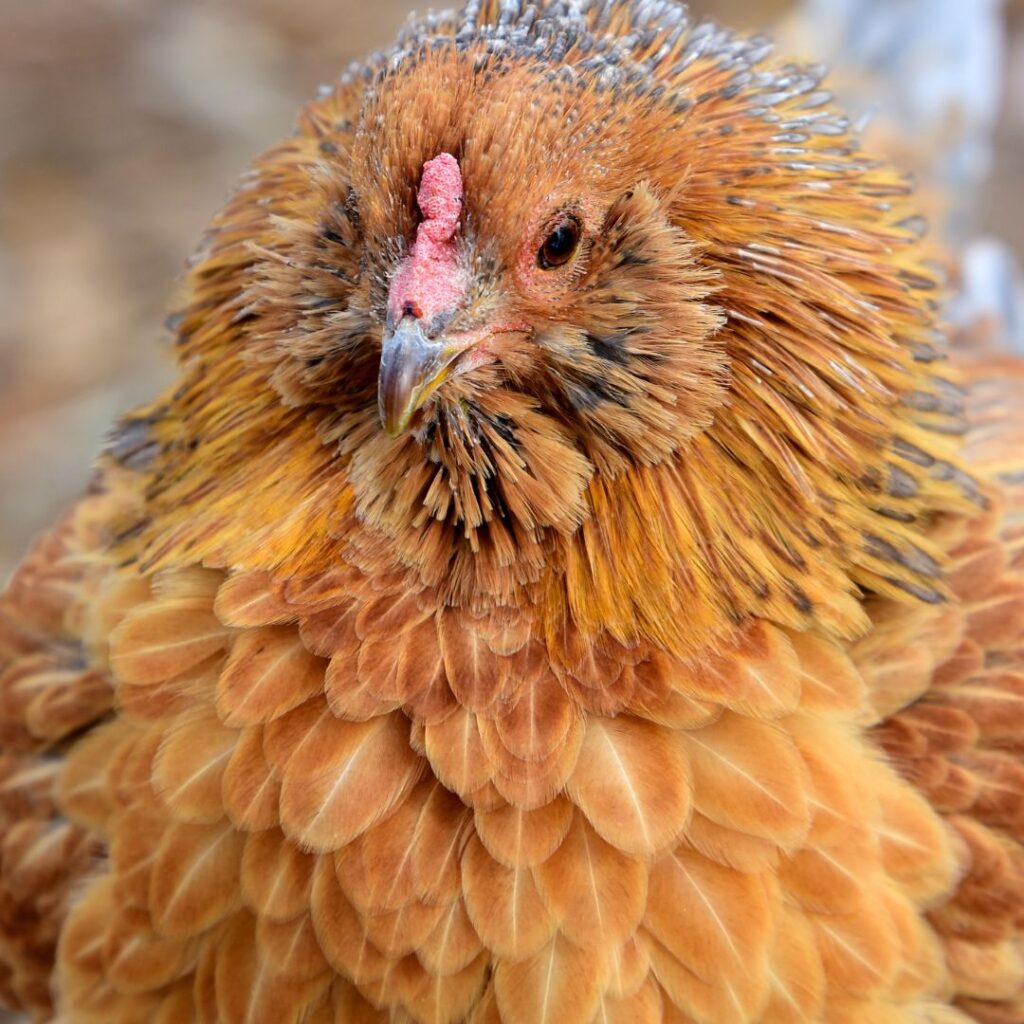
It was developed to keep the blue-egg gene but eliminate the Araucana breed’s dangerous alleles.
The first Araucana was brought to the United States in the 1920s. There, breeders did several breeding experiments at Pratt Experimental Farm in Pennsylvania.
The Araucana chickens are the direct ancestors of the Ameraucana chickens of today.
In 1920 the Araucana was brought to the United States, where Prof. Salvador Castillo held a conference.
One of the attendees was Thomas Keller of the Pratt Experimental Farm in Pennsylvania (also a breeder of the Araucana). He is the founder of the popular Ameraucana. These birds were created by crossing various breeds to the Araucana, including brown egg layers.
Over time he reached uniformity in the breed and submitted these chickens to the APA for breed acceptance.
The American Poultry Association accepted the Ameraucana in 1984.
The Ameraucana is now found in Standard Breed size and Bantam Breed size.
Ameraucana Chicken: Breed Standard and Appearance
The Ameraucana is considered a Standard sized breed. The Americana rooster (Males) weighing 7lbs, and the Females (hens) weighing 4lbs at maturity. Ameraucana pullets and roosters are only slightly smaller. The maturity age is approximately 22 weeks.
They have a pea comb. Legs are clean (non-feathered) legs that are green in color.
They also have muffs and beards.
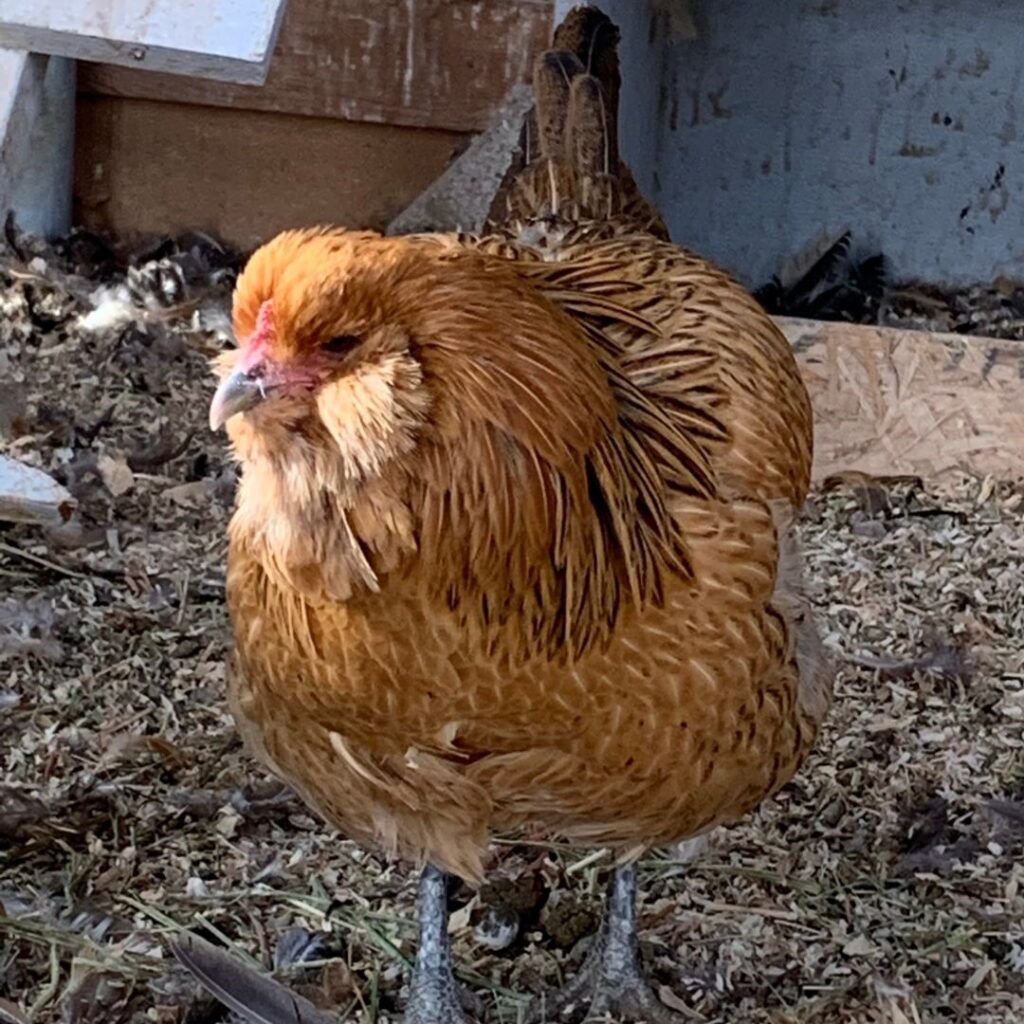
Color Varieties/ Feather Coloring
Accepted by The American Poultry Association (APA).
Black (the most popular Ameraucana variation)
Ameraucanas have light blue/grey legs, beards around their face, and puffy cheeks. As with All Ameraucana, they have pea combs.
Adult feathering is all black with a green ‘sheen’ (iridescent) shine. Many young birds will still show white feathering until their first molt. Leave your worries at the door; the colors will be true black within six months’ time.
Blue
The blue gets its coloring from black feathers diluted by the blue gene. The bird’s feathers are blue/gray in color. Ideally, each feather should have black lacing.
Blue Wheaten
Hens all have base feathers that are off-white/cream with golden tones on top with blue/slate or black color on the tips of tail feathers and wings. Saddle and neck feathering on all males range from bright gold to red.
Brown Red
Hens have a mottled black color across their bodies, tails, and wings. They have rust feathering on their heads down the neck.
Roosters are iridescent black across their bodies, tails, and wings, with rust (brighter than hens’) feathering down from their heads to their shoulders. The rooster’s muff and beard are black.
The Brown Red (color varieties) have slate black legs, feet, and beaks. This is for both hens as well as roosters.
Buff
Slate/blue legs contrast their golden buff feather color, giving the breed a stunning appearance. They also have (as with all Ameraucana) pea combs as well as muffs & beards.
Self Blue (also known as the Lavender Ameraucana)
As the name suggests, the self-blue Ameraucana chicken is a beautiful blue (a soft grey with a lavender tint) all over. Their feathers often have a greenish tint, black tails, and wing tips. They have red combs and wattles, and their legs and feet are usually a lavender color.
Silver
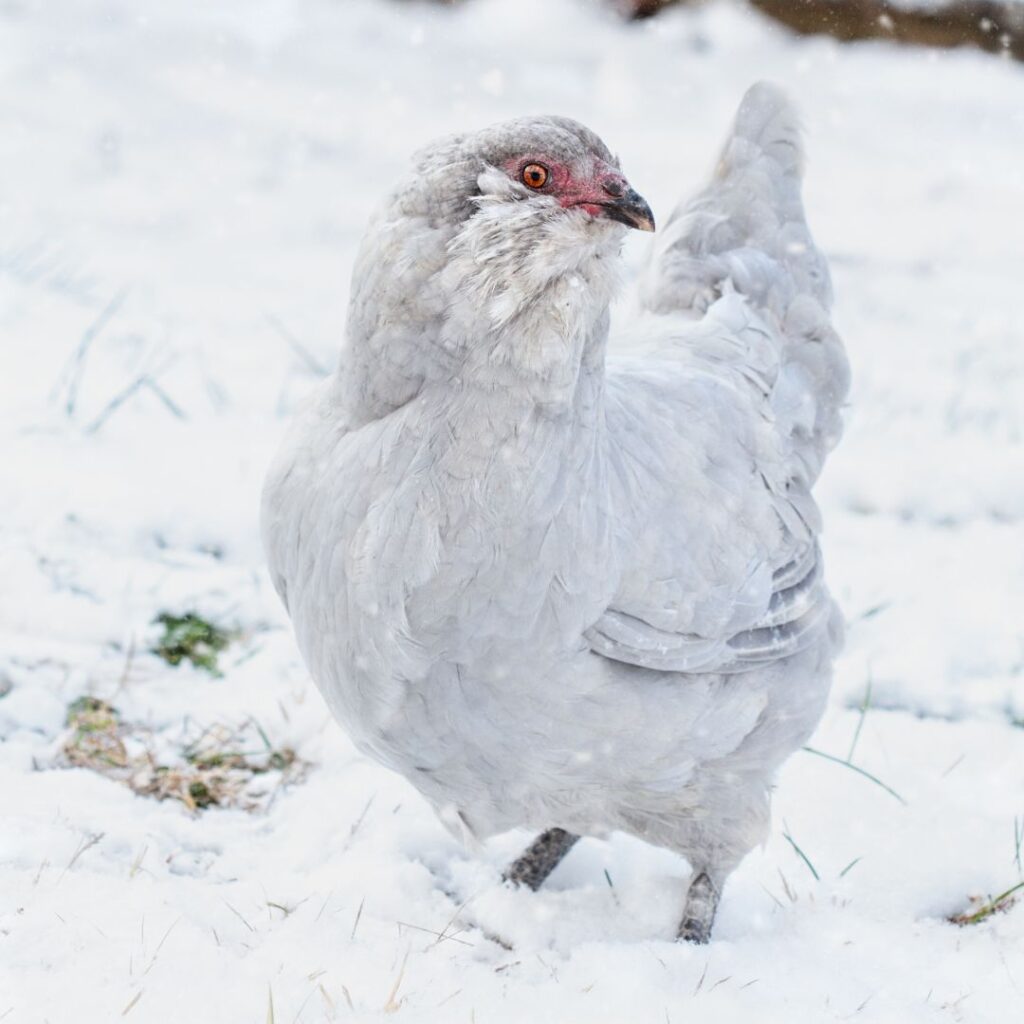
Wheaten
The wheaten and blue wheaten colors might confuse you. It’s simple: The blue feathers on blue wheaten chickens will take the lace of black ones seen on the wheaten birds. This coloring is on both the hens and the roosters.
White
The White hen has a predominantly white body with orange and white areas on wing feathers tipped in black, and the tail is primarily black with white appearing as striped.
The rooster has grey feathers on his underside with iridescent black feathering that give that iridescent appearance. These cover the wings as well as the tail feathers.
The rooster also has a black muff and beard. He has bright orange wattles and a pea-shaped comb on his head.
A black beak and slate black legs and feet are on the roosters and hens.
Color Varieties Recognized by the American Bantam Association
Black, Blue, Blue Wheaten, Brown Red, Buff, Self Blue, Silver, * Splash, Wheaten, and White.
* Splash is the only color recognized by the ABA, not the American Poultry Association.
What Do ameraucana baby chicks look like?
Personality of The Ameraucana Chickens
Ameraucana chickens are a favorite among many backyard chicken enthusiasts due to their friendly dispositions. These birds are curious and adventurous, and they love to forage. However, they are also content to be confined to a big run.
Ameraucanas are generally docile and calm, making them ideal birds for those looking for a low-maintenance pet. While they may not be the more cuddly of all chicken breeds, their friendly nature makes them a great addition to any flock.
ameraucana rooster vs hen Personalities
Roosters can be just as docile and friendly as hens. However, during mating times, they tend to be a bit aggressive. Roosters are always a little more aloof than hens, so if you’re keeping a rooster with your flock, it’s a good idea to spend equal time trying to socialize yourself with them by hand-feeding treats and slowly working up to petting. Read more about the role of a rooster in a flock here.
Are the Ameraucana Breed Noisy?
Ameraucana chickens are known for being relatively quiet. They rarely make noise while they are outside, and this can be a benefit for those who have close by neighbors.
However, Ameraucana chickens will make a bit of noise when laying eggs and may also make noise if predators are nearby.
Overall, Ameraucana chickens are not considered excessively noisy, and they can be a good choice for those who want to keep chickens in an urban area.
Ameraucana Hen Egg Production
This is a pretty respectable egg-laying breed, especially for colored eggs. Like all hens, they lay more in warm weather/ longer days. The more daylight, the better for egg production. You’ll find winters can be pretty sparse on the fresh egg production but worth the wait.

How’s the Egg Production of The Ameraucana Chickens?
These birds lay blue eggs (occasionally green eggs) at a rate of about 3-4 per week.
Remember, they don’t lay eggs as often during winter months (less daylight), so you should expect to see about 200 eggs per year.
Eggs are medium to large.
If you supplement the light in your coop, you could see up to 250 eggs per year.
See tips on how to clean and store eggs here.
At what age do Ameraucana chickens start laying eggs?
Some hens will start laying eggs as early as five months old (20 weeks). You’ll have some beautiful blue eggs by six months of age (24 weeks).
How long do Ameraucana chickens lay eggs?
Once the Ameraucana hen starts to lay eggs, she will continue at peak production for approximately 4-5 years when egg production slows and eventually stops between 5-7 years old.
You can read more on how long chickens lay eggs here.
Also, read why chickens top laying eggs here.
Do all Ameraucana chickens lay blue eggs?
All Ameraucana chickens lay blue eggs, sometimes greenish-blue eggs. Most Ameraucana hens lay blue eggs consistently.
Some have an egg color that appears greenish blue.
Can Ameraucana chickens lay White or Brown Eggs?
The answer to that is a hard ‘no.’ The Ameraucana hens only lay blue eggs (sometimes greenish blue eggs). You should check out the White Leghorn if you are looking for a hen that will lay white eggs.
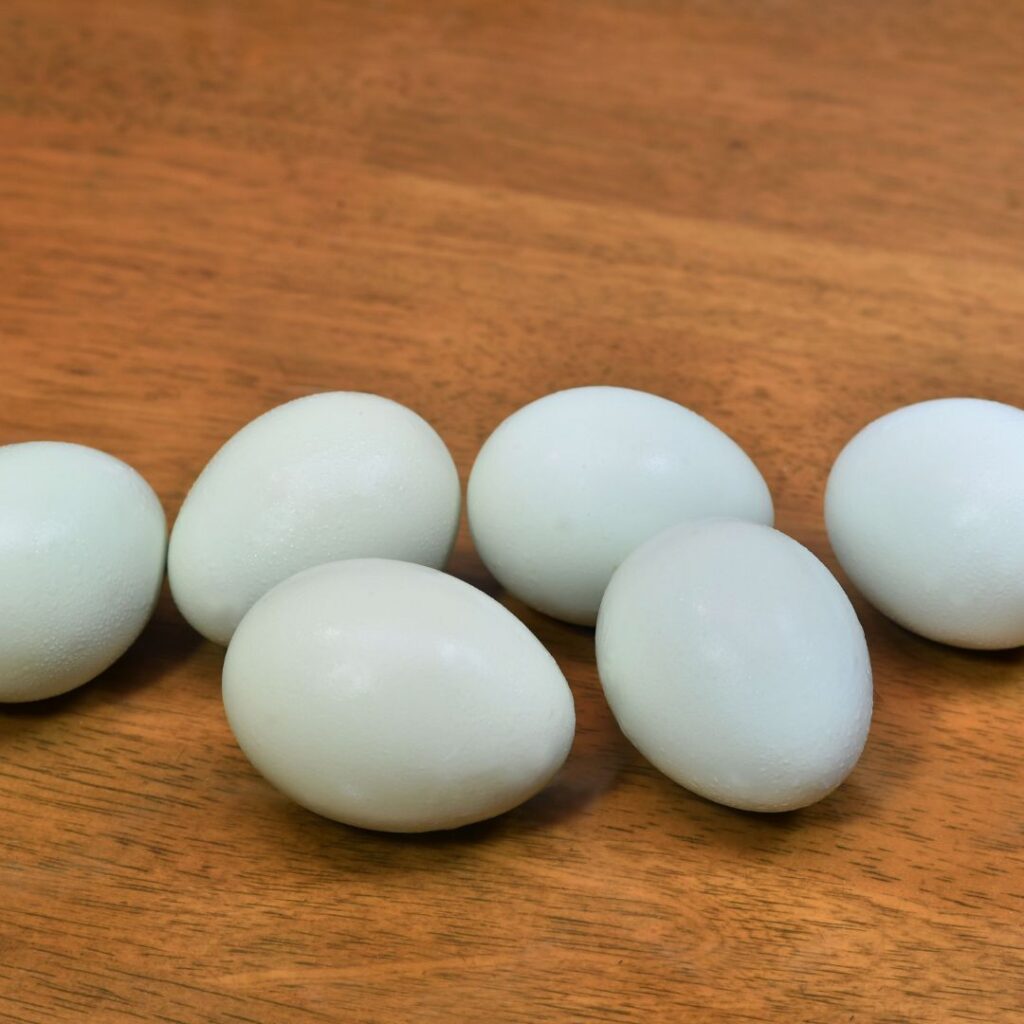
Is the Ameraucana Chicken A Good Meat Bird
The Ameraucana chicken, especially the rooster, can be a great option for a meat production bird. Although not many will raise this chicken breed specifically for meat production, you may find that sending your rooster to market is the solution if you have more roosters than your flock ratio allows.
Males mature at about 22 weeks at approximately 7 pounds, which would be an excellent time to send to market.
Read About The Cornish Chicken Breed Here.
The Ameraucana Chicken Coop
Space – When setting up the chicken coop, allow for 4-6 square feet per chicken. If they are permitted to free range daily, you should be able to get by with somewhat less chicken coop space, but more area is always preferable to less.
Perch – Eight (8) inches per bird is the perfect space for roosting. During the summer, chickens will like to spread out a little. You’ll notice they will huddle together more when it is chilly.
Nesting box – Be sure you have the recommended one nesting box per 4 hens (1:4). The standard size of 12 “×12″ x12” for nesting boxes will be great. If you build anything larger, you may find hens will nest together and end up with broken eggs, so try to keep them separate.
The Chicken Run
Space – This is a breed that likes to roam.
The Ameraucana prefers their freedom to roam. If you have to confine them, ensure they have plenty of space and perches.
Keeping them in a run, you should have a minimum of 10-15 square feet for each bird.
You can add things like perches at various heights and boxes or utility pails they can stand on to increase the space available to them. Even old tree stumps and logs will do the trick here.
However, if you allow them ‘recess’ a few times weekly, they will thrive on this freedom. They are naturally curious birds and prefer to find their food if they can.
They are also predator-savvy, a huge plus for the free-ranging bird.
Shelter from elements – A shady area such as a tarp, shade cloth (for summer), lean-to, or tent-type structure.
These shelters provide much-needed shade in the summer and a dry spot in the winter, and they also give your birds the chance to get some fresh air and exercise.
Dust Bath – Every chicken owner should provide a dust bath area for their birds. There’s no need to go in debt over this; a simple dug-out area in the run. You could use a kiddie pool, or an old tire filled with dried soil/sand/diatomaceous earth will be more than sufficient. This method will allow your bird to clean itself, which will help keep lice and mites at bay.
Fencing height – When you have Ameraucana chickens- known for their ability to fly – it’s necessary to consider a taller fence than the average six feet. Eight or ten feet should do the trick in keeping your feathered friends contained.
Keep predators from accessing your coop by keeping your hen house and run secure and in good repair.
Free-Range and Foraging
When it comes to foraging, Ameraucana chickens are not the laziest breed. They love to scratch and peck around in your yard (and beware, your garden, too!). They love looking for tasty bugs and grubs to eat.
Many Ameraucana chicken owners find that their birds are so good at foraging that they eat less of the commercial feeds than other chickens that forage less. However, remember that for healthy chickens you still need to provide them with high-quality chicken feed.
Can the Ameraucana Chicken Breed Withstand Freezing Temperatures and Extreme Heat?
Ameraucana chickens are resilient to both warm and cold climates.
Because they have a small pea comb, Ameraucana chicken is less likely to experience frostbite.
They can handle the heat and cold just as easily, making them an incredibly versatile breed.
If you want to keep Ameraucana chickens, it is vital to have a firm and well-sealed coop. Good ventilation is key to a healthy chicken coop, preventing moisture and allowing fresh air circulation.
The runs should have a dry area to hide out. You should also check the fencing regularly for any ‘breaches’ or weak spots. Repair these quickly to reduce any risks to your flock.
Fresh water is required, particularly during severe weather.
Ice cubes help to keep the water cool in the summer, while you may need a heated waterer in freezing temperatures.
Take these precautions, and you’ll ensure that your Ameraucana chicken is comfortable year-round.
Much More On Caring For Chickens In The Winter Here.
Other Light Blue and Blue Egg Laying Breeds
Araucana chickens – Araucana chicken is a South American breed developed in Chile. These chickens are best known for their tufts of feathers around their ears and their(sometimes called artic blue egger) blue or green eggs. Araucana chickens make great pets and lay very colorful eggs!
Legbar Chicken breeds – The Cream Legbar chicken was a British breed developed in the 1930s. These birds are best known for their distinctive cream-colored plumage and ability to lay green or blue chicken eggs.
Easter Eggers – Easter Eggers chickens are not an official breed but a cross between two chicken species (mixed breed chickens). These birds usually have mixed-colored plumage and lay colorful eggs -for example, bluish or greenish eggs. Occasionally you’ll even have Easter Eggers that will even lay pink eggs! (all the colored eggs = the name Easter Eggers) Easter Egg chickens are fast becoming popular as hardy, egg-laying friendly pets. Who would want a flock of different chicken egg colors, right?
Easter Eggers are becoming increasingly popular among backyard chicken keepers.
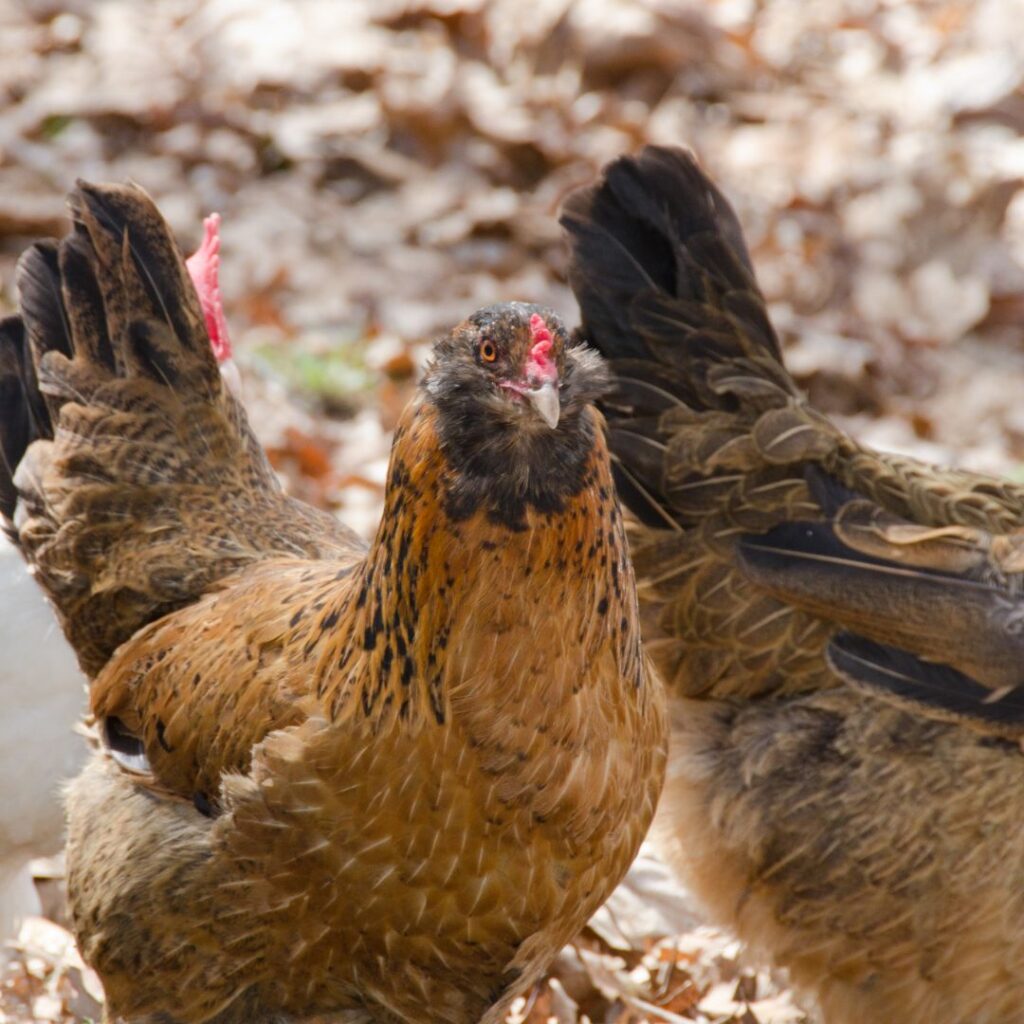
Where To Look For ameraucana chicks for sale
Try our post on our favorite online hatcheries. Most, if not all of these sources offer Ameraucana chicks
Are the Blue Egg Ameraucana Chickens Right For Your Backyard or Hobby Farm?
Ameraucana chickens were originally bred in the 1970s from Araucanas. Ameraucanas were bred to lay blue eggs but without some drawbacks common in Araucana chickens.
Ameraucana chickens are a versatile breed that makes a great addition to any backyard flock. They are known for their beautiful blue eggs, but they also make good meat birds. Ameraucana chickens are relatively calm birds that get along well with other chicken breeds. Still, they can be skittish around loud noises or sudden movements, so it’s essential to handle them gently regularly if you want them to be tame.
Overall, Ameraucana chicken’s amicable dispositions and willingness to accept handling make them a desirable choice for beginner chicken keepers or those who want calm, friendly backyard chickens.
Looking for a Giant Chicken ? Look no further. Read about the Jersey Giants here.
Read about the Cochin chicken breed here.
FAQ’s
What Is The Lethal Gene?
Araucana chickens carry the lethal gene, which is fatal to chicks having this gene from both the hen and rooster.
This gene is what gives the Araucana its distinct tufted ears. If both parents pass on the tufting gene to their offspring, the chicks will die while still in the shell.
Ameraucanas were bred to produce blue eggs but without the deadly gene.
Are Blue Eggs The Same Nutritional Value as Brown Eggs?
Yes, brown, blue, and white eggs have the same nutritional value.
What is a scissor beak?
The Ameraucana has a genetic beak issue. As they grow, 1% of chicks may have some degree of severity of this cross beak (scissor beak). This occurs when the top and bottom beaks don’t line up. This condition typically worsens as the chick matures.
Are Easter Eggers and Ameraucanas the same breed?
The Easter Egger is hybrid chicken. Hybrid means it is a cross between breeds. This is typically a chicken crossed with a blue egg-laying breed (like the Araucana or Ameraucana) and a hardy brown egg-laying breed like the Rhode Island Red or White Egg Laying breed like the Leghorn. The Easter Egger has the blue egg-laying gene, just like the Ameraucana and the Araucana.
Easter Eggers are pretty popular among hobby farmers and backyard chicken keepers.
Are Lavender Ameraucana rare?
The Lavender Ameraucana is one of the most popular and sought-after varieties due to its unique coloration.
While Lavender Ameraucanas are certainly beautiful chickens, they are not particularly rare. They are one of the more common Ameraucana varieties. However, because of their popularity, they can be difficult to find at times. If you are interested in adding a Lavendar Ameraucana to your flock, check with your local breeders to see if any are available.
What are Americana Chickens?
Although some hatcheries and other breeders offer birds labeled Americana or Americauna, these are not Ameraucanas. Please take note of the spelling.
It’s just a gimmick. What is more truthfully being offered is an Easter Egger chicken, which is a hybrid.
However, the real Americana of chickens is with the pilgrim breeds, the ‘first chickens’ of the U.S. ; Dominique and Plymouth Barred Rocks.

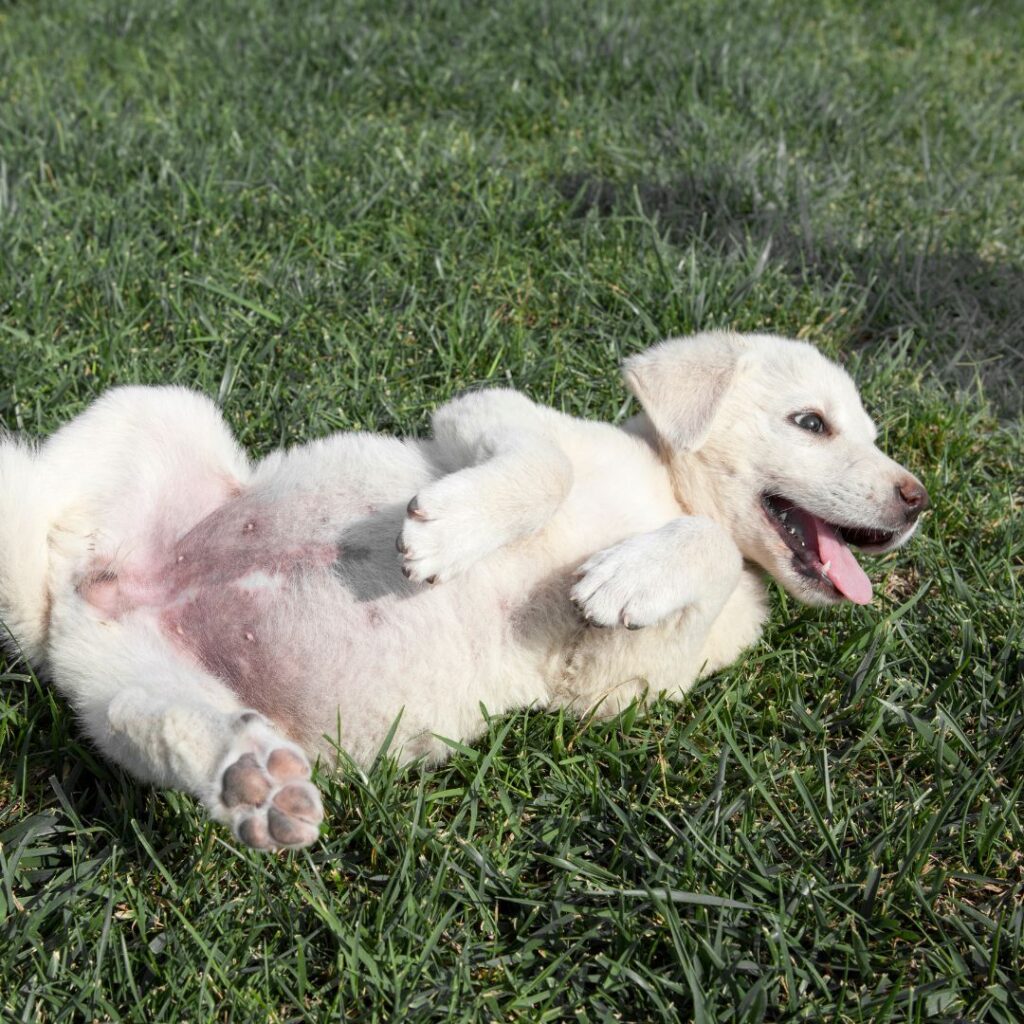
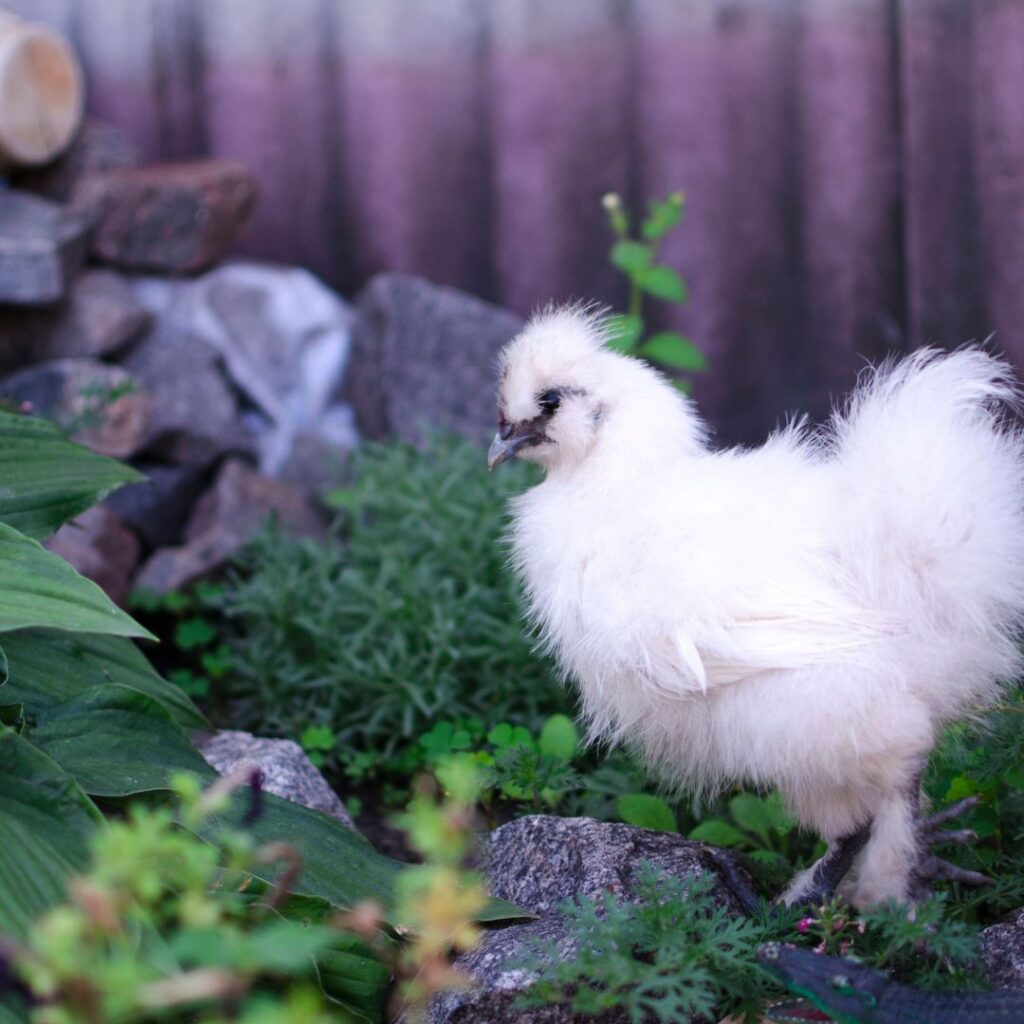
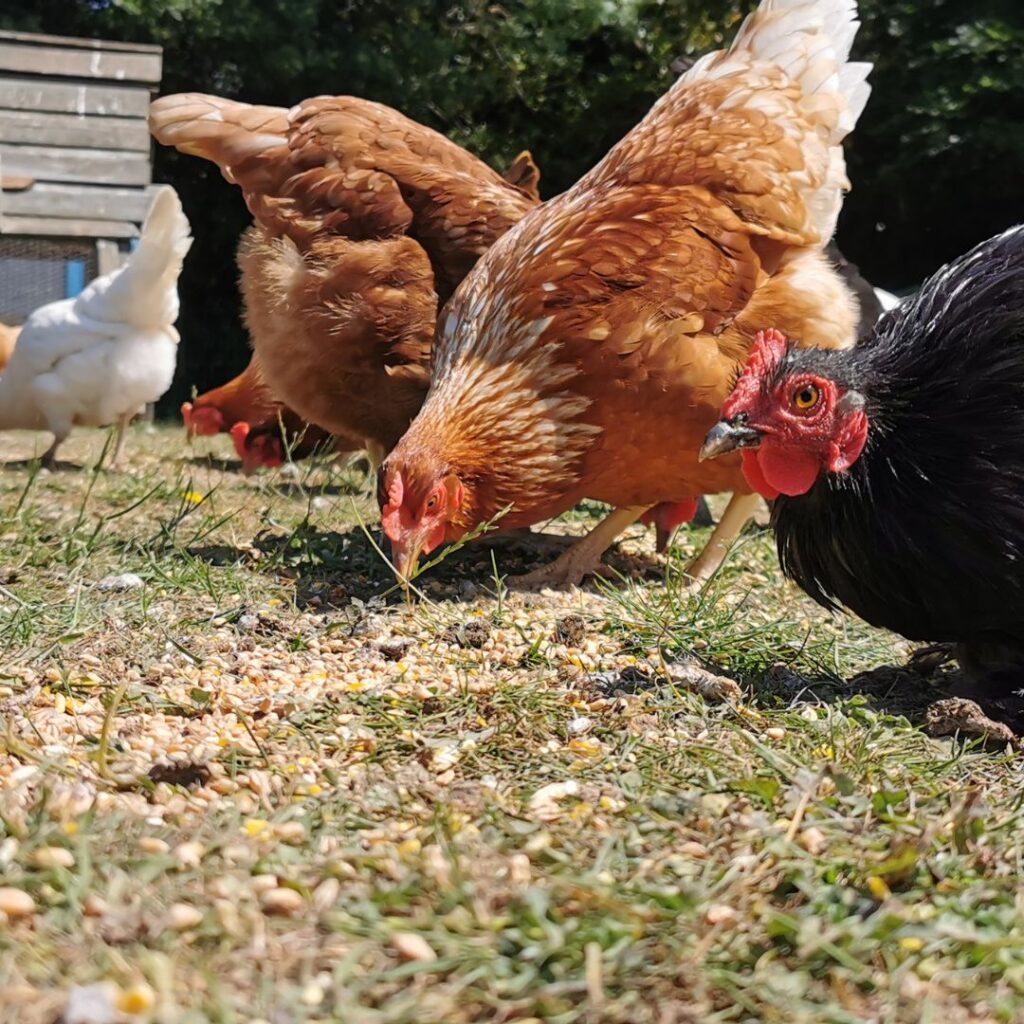
Pingback: Brahma Roosters and Hens: All About
Pingback: 11 Benefits Of Raising Backyard Chickens - Gilmore's
Pingback: Raising Backyard Chickens; Tips For Beginners - Gilmore's
Pingback: What chickens can Teach Children, A Great Pet Choice - Gilmore's
Pingback: French Black Copper Marans Chicken, About Eggs, Care, History
Pingback: 5+ Best Egg Laying Chicken Breeds; Qty, Color, Size Of Eggs
Pingback: 18 Cold Hardy Chicken Breeds For Harsh Winters - Gilmore's
Pingback: How Many Eggs Do Chickens Lay? This May Surprise You! - Gilmore's
Pingback: Cornish Chickens: A sweet Heritage Breed - Gilmore's
Pingback: Tips For Buying Backyard Chickens; Your 2022 guide - Gilmore's